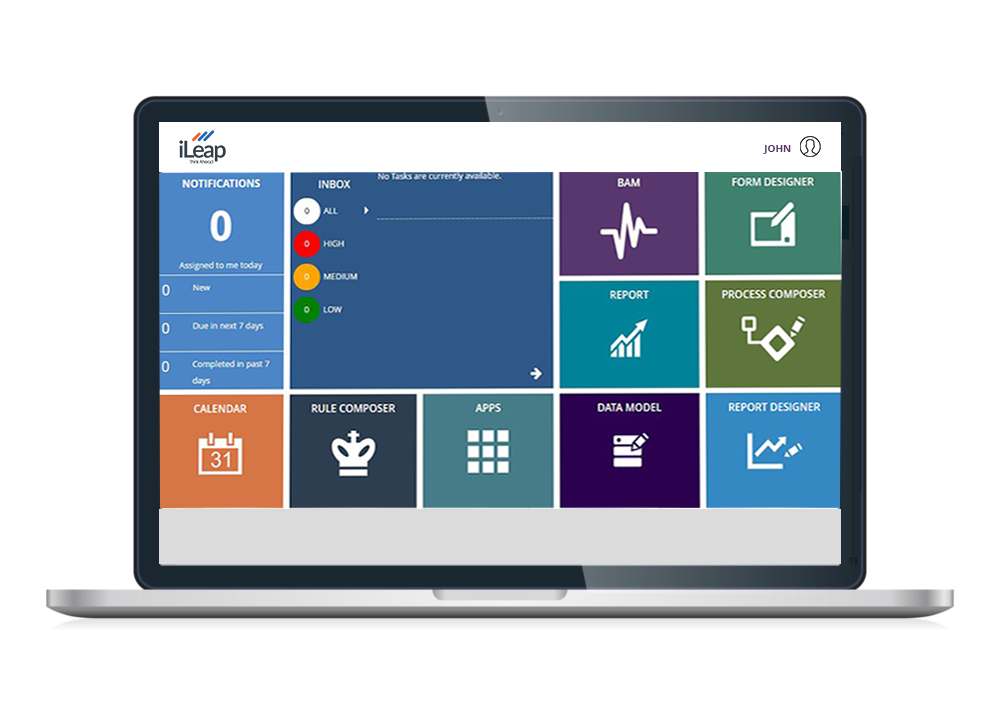Recommended Info For Choosing Low-Code Platform Recommendations
Wiki Article
Benefits Of Low-Code Application Development Terms Of Speed
Visual Development Environment:
Drag-and-Drop Interfaces: Low-code platforms provide visual tools for designing applications. Developers can easily build applications using drag-and-drop components without having to write code.
Many low-code platforms have already-built templates or components that enable developers to quickly prototype applications and build them without needing to start with a blank slate.
Reduced Coding Requirements
Automated Code Generation: The low-code platform automatically generates code underneath based upon the visual models created by developers. This removes the need to write the code manually and speeds up the process of development.
Reusable Parts Developers will be able to reuse parts that are reusable across projects and reduce the time needed for writing and testing code.
Collaboration is made easier:
Low-code platform tools often include testing, versions control deployment. This enables the seamless communication between teams.
Citizen Development: Business users as well as non-developers can contribute to application development by using intuitive interfaces, reducing the bottleneck of development often caused by the lack of accessibility of professionals.
Rapid Iteration and Prototyping
Fast prototyping: Developers can create prototypes quickly to validate concepts and get feedback. This can result in a shorter iteration cycle.
Simple Modifications. The visual nature of low-code development allows users to modify and update their applications.
Pre-built Integrations:
API Integrations. Low-code platforms typically have pre-built connectors and APIs for services that are popular, which reduces the amount of time required to connect other systems.
Data Integration: Built-in tools for data integration make it easier to process of connecting databases and other sources of data and speeding development.
Deployment & Scaling
One-Click Installation: A lot of low-code platforms have an installation with a single click that reduces the amount of effort and time needed to install applications.
Cloud-Based Platforms: Cloud-based platforms that have low-code capabilities can manage infrastructure and scaling, so developers can focus on the logic and performance of their applications rather than deployment logistics.
The primary benefit of low code application development, in terms of speed, is its capacity to automate and simplify many aspects of the process. This enables faster delivery of applications, and quicker adaptations to changing demands. Check out the top rated my review here on Low-code Platform for application development for blog recommendations including rapid applications, develop mobile application, build with docker, no code platforms, ms azure sql, rapid application design, app modernization, build with docker, stored sql procedures, low code platforms and more.

Benefits Of Low-Code Application Development In Security And Governance
Low-code applications offer several benefits in terms of cybersecurity and governance and cybersecurity, which is essential to ensure that applications are managed, well-managed and in compliance throughout their lifespan. Here are the benefits of low-code application development:
Unified Management Console: This low-code platform typically provides a central dashboard that administrators can use to monitor and manage all apps to ensure consistency in governance throughout the entire organization.
Role-Based Access Control RBAC : These platforms typically have robust access controls that are based on roles. They enable administrators to create and enforce policies. This guarantees that only users who are authorized can access or modify particular parts of an application.
Compliance and Regulatory Applicability:
The advantages of conformity: Many platforms using low-code have been built to conform to industry standards. They provide frameworks and tools to ensure that applications comply with specifications.
Audit Trails: Organizations often use comprehensive log and audit trail systems, which enable them to keep track of changes as well as track access, and ensure the compliance of internal and external laws.
Improved Security Measures
Data encryption: Low-code platforms commonly offer built-in encryption for data at rest and while in transit, making sure that sensitive information is protected.
Security Certifications - A lot of lowcode companies have security certifications, such as ISO 27001 (or SOC2) which proves the compliance of high security standards. Customers can rest assured that the service adheres to these standards.
Automated security updates
Regular Patching and Updating Lowcode platforms generally provide regular security updates. These patches protect users from the most recent threats without requiring the involvement of developers.
Security Monitoring: Continuous monitoring of security tools are typically used, which provide real-time alerts and insights into security risks that might be present.
Data Governance
Data Access Policies: These software tools permit organisations to define the data access policies, enforce them and keep track of policies. This ensures that data are only accessible by authorized users and used correctly.
Data Masking and Anonymousization The built-in tools that hide and anonymize data helps protect sensitive information in testing and development environments.
Consistent Application Lifecycle Management:
Pipelines for development and deployment: Low-code platforms allow for integrated development and deployment, which includes security tests. This guarantees security throughout the lifespan of the application.
Version Control: Integrated version control helps manage modifications and makes sure that modifications to the application can be monitored and reversed if needed, maintaining the integrity of the application.
Authorization and Authentication of Users:
Single Sign-On - Support for single sign-on (SSO), and other advanced authentication mechanisms, simplifies management and increases security.
Multi-Factor Authentication - Many platforms allow multi-factor Authentication that adds an extra layer to security when accessing applications.
Monitoring of Policy Enforcement
Low-code platforms often come with policies templates pre-defined that allow organizations to establish governance and cybersecurity policies quickly.
Compliance Monitoring Tools - These instruments allow for constant monitoring of compliance status and offer the ability to report, making it easier to find and correct possible issues.
Integration into Existing Security Infrastructure
Seamless Integration: Low-code platforms are designed to integrate seamlessly with the existing security infrastructure and tools, such as identity management solutions and SIEMs (Security Information and Event Management Solutions), and firewalls.
API Security: API security features to protect data and ensure the integrity of applications are built into the API.
Best Practices and Training
Guided Best Practices : Many platforms offer guidelines and best practices to assist non-developers adhere with security standards.
Security Training: Some low-code vendors provide security training and resources to educate users on how to build and maintain secure applications.
Overall, the governance and security advantages guarantee that applications are developed and maintained in a secure manner, in compliance with regulations and in control. These platforms contain the frameworks and tools needed to supervise and control development of applications, as well as protect sensitive data while maintaining regulatory compliance and enforcing policies. Read the best his response for Enterprise application development with Low-code Platform for blog examples including cross platform mobile development, rad development, cross platform app development, push notifications android, cross platform mobile dev, push notifications android, rad application development, developing mobile apps, application modernization, build a docker container and more.

Benefits Of Low-Code Application Development In Terms Of Community Support And Vendor Support
Low-code application development platforms offer substantial advantages in terms of the support provided by vendors and communities, which is essential to ensure the success of implementation, continuous maintenance and constant enhancement of applications. Here are the top advantages: Support from vendors
Comprehensive Technical Support:
Support Teams with Dedicated Support A lot of low-code platforms have special support teams that are able to assist with technical issues, problem-solving and provide guidance. This will ensure that any issues are swiftly solved.
Some vendors offer 24/7 support. This is especially beneficial to global businesses with different time zones.
Training and onboarding:
Vendors offer structured training courses such as webinars, tutorials, and certifications to assist users in becoming familiar with the system.
Customized Onboarding A lot of vendors offer personalized services to help their new clients implement the platform successfully and tailor it specifically to their needs.
Regular updates and enhancements
Continuous Improvement: Lowcode platform vendors usually regularly release updates that contain new features, performance improvements and security patches. This helps to ensure that the platform stays current and secure.
Feedback Integration: Vendors include feedback from their users into their development cycles to ensure that the platform is constantly evolving to meet the changing requirements of their users.
Comprehensive Documentation:
Documentation in Detail Users can get answers to their issues by reading the detailed and well-organized manual that covers all the aspects of the program beginning with its fundamental functionality to more sophisticated customisation.
API References API documentation provides detailed API references to assist developers connect their low-code platform apps with other platforms.
Consulting and Professional Services:
Expert Consulting: Vendors often offer consulting services to assist in the process of strategic planning, architecture design, and complex implementations, ensuring that users can leverage the platform to its fullest potential.
Custom Development Services: A few vendors will offer custom development services to create functionalities or integrates for their customers which aren't readily available.
Community Support
Active User Community:
Discussion and Forums: Many low-code platforms have vibrant online communities, where users are able to ask questions, debate solutions, and work with one another on the best methods.
User Groups and Meetings: Virtual and local user groups and meetups offer opportunities to learn about, network, and share experiences with others.
Knowledge Sharing and collaboration:
Community-Contributed Resources: Users often share templates, modules, and extensions that they have developed, which can be reused or adapted by others, accelerating development and innovation.
Crowdsourced Problem Solving: The collective knowledge and experience of the crowd can be a great source for identifying issues and figuring out creative solutions for complex issues.
Learning and development:
Community-Led Training: Several communities hold workshops, training sessions and webinars, often run by knowledgeable users who offer practical tips and advanced techniques.
Online Tutorials: Members of the community make and share a variety of online tutorials, how-tos, and classes. These resources are accessible to all.
Feedback and Influence
Forums for Product Feedback Community forums offer a variety of channels for providing feedback to vendors, which will help in the development of new features.
Beta Testing Programs: Active members of the community may be able to participate in the beta testing program. This will give them an early look at new features and also an opportunity to shape the development of the platform.
Recognition and support
A lot of companies offer community recognition programs. These programs honor active members of the community and also include MVP programs.
Peer Support: Members of the community often provide peer support, sharing their expertise and offering guidance to less experienced users in a supportive and supportive environment.
Overall, the combination of robust support from the vendor with a vibrant and engaged community results in an extensive support ecosystem to develop low-code applications. Users will be able gain access to the experts, resources, and collaboration opportunities they need in order to successfully build, deploy, maintain, and enhance their applications.
